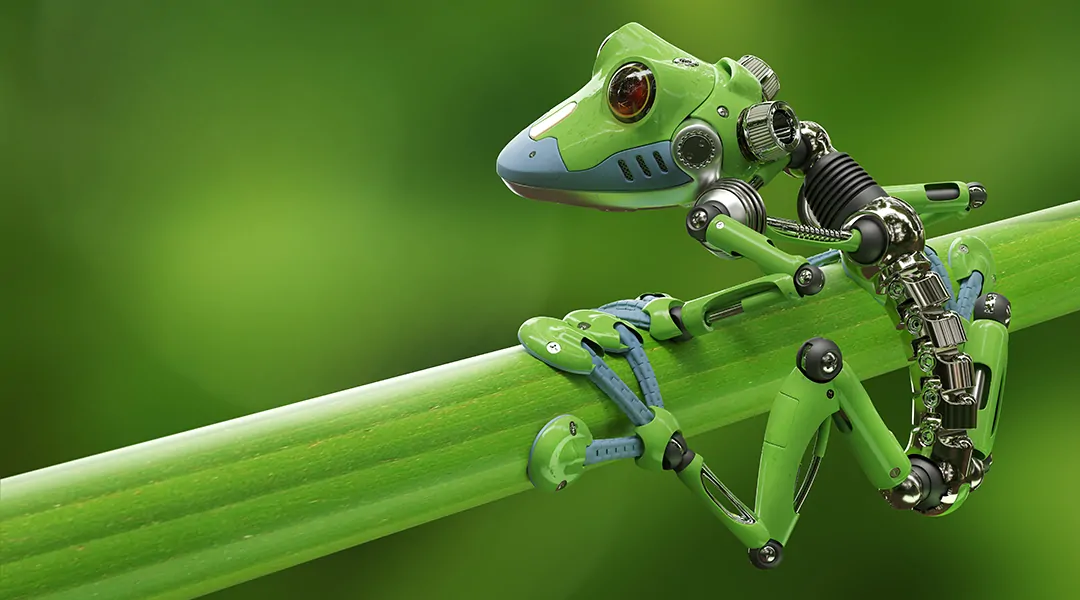Robots are becoming increasingly common in our lives, but scientists have taken the concept a step further with the creation of xenobots. These robots are made from living cells and can perform a wide range of tasks, from delivering medicine to cleaning up pollution.
Xenobots, named after the African clawed frog (Xenopus laevis), are made from frog cells that have been reprogrammed to create a specific shape and function. The cells are then combined and allowed to grow together into a living organism. The resulting xenobots are tiny, with some measuring only a few millimeters in length, but they are incredibly versatile.
One of the most exciting things about xenobots is that they are entirely biodegradable. They are made from natural materials, and when they are no longer needed, they simply break down, leaving no harmful waste behind. This is a huge benefit compared to traditional robots, which are often made from materials that can take hundreds or thousands of years to break down.
But what can xenobots actually do? Researchers have already demonstrated several potential applications for these tiny machines. One of the most promising is in the field of medicine. Xenobots can be programmed to deliver drugs to specific parts of the body, or even to remove harmful toxins or cancer cells.
Read Also: Incredible! Robots Take Over Virus Fight In Rwanda
Another potential use for xenobots is in environmental cleanup. These tiny machines can be programmed to break down pollutants in the environment, such as oil spills or plastic waste. They can also be used to monitor water quality or other environmental factors, providing real-time data to scientists.
Xenobots could also be used in agriculture to improve crop yields or to monitor plant health. They could be programmed to detect pests or diseases and to apply the appropriate treatment. They could even be used to help with pollination, ensuring that crops are fertilized and produce healthy fruits and vegetables.
But how do scientists create these tiny machines? It all starts with stem cells, which are found in embryos and can develop into any type of cell in the body. The researchers take stem cells from frog embryos and use them to create specific cell types, such as muscle or skin cells. These cells are then combined and allowed to grow together into a specific shape, such as a sphere or a tube.
Once the xenobots are created, they can be programmed using a computer. Researchers can specify the type of movement they want the xenobots to make and the tasks they want them to perform. The xenobots then use their own internal energy to perform these tasks. While xenobots are still in the early stages of development, they have the potential to revolutionize many different fields. These tiny robots, made from living cells can move around, work together, heal themselves, and even self-replicate.
Although there are also concerns about the ethical implications of creating living machines, the creation of xenobots is a significant breakthrough in the field of robotics and bioengineering. Some people worry that the technology could be misused, or that it could lead to unintended consequences. Despite these concerns, scientists believe that the development of xenobots is a significant step forward in the field of robotics and bioengineering.
In summary, xenobots represent a new frontier in the field of robotics. They are made from natural materials, are highly versatile, and can be programmed to perform a wide range of tasks. As research in this field continues, we can expect to see even more exciting developments in the years to come.
Ehi Ogwiji is a storyteller and science writer who advocates for a science-literate Africa. She aspires to be a science development communicator and leader of important conversations around gender imbalances in STEMM (Science, Technology, Engineering, Mathematics, Medicine) in Africa and around the world. She writes from Abuja, Nigeria. Connect with her on social media @ogwijiehi.
